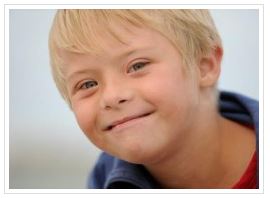OT/PT Corner: Yoga an Effective Therapy for Down Syndrome
By: Donna Freeman of Yoga In My School
 Yoga is highly effective when used as a therapy and fitness routine for children with Down Syndrome (DS). This ancient practice can easily be modified to suit various conditions and personal interests and is becoming one of the most highly recommended therapies by doctors and clinics.
Yoga is highly effective when used as a therapy and fitness routine for children with Down Syndrome (DS). This ancient practice can easily be modified to suit various conditions and personal interests and is becoming one of the most highly recommended therapies by doctors and clinics.
Yoga meets both the physical and mental needs of individuals with DS. It provides an activity which strengthens the body, improves self-esteem, develops concentration, and increases body awareness. Children with DS readily respond to an individually developed yoga practice. Care givers, teachers, parents and yoga instructors must, however, take care so as to ensure children do not overstretch. This is a tendency due to the loose nature of the muscles and ligaments common with DS. Poses are easy to modify to meet any individual needs including shorter limbs and small stature.
Ways to use yoga for DS include:
Music Therapy
Chanting, drumming, mantra repetition, meditation, and relaxation to music are all ways to incorporate music therapy into a yoga practice. The sounds used promote, maintain and restore mental, physical, emotional and spiritual health while encouraging creativity and self expression.
Pulmonary Conditioning
Breathing exercises or pranayama are especially beneficial for children with congenital heart defects common with DS. In addition they help ease pulmonary hypertension, relieve nasal congestion and build the immune system.
Standing Poses
Low muscle tone (hypotonia) is characteristic with DS. Yoga standing poses such as Mountain, Tree, Warrior and Triangle help to correct flat feet, weak ankles and unstable knee caps, as well as improve muscle strength throughout the body.
Thyroid Stimulation
Thyroid dysfunction is often a concern for children with DS. Yoga practices of jalandhara bandha, Bridge Pose and Shoulder Stand stimulate the thyroid gland. Please note if atlantoaxial instability exists Shoulder Stand should be avoided.
Digestive Ailments
Relief from digestive aliments and constipation can be found through practicing twists and other abdominal condensing poses such as Wind Relieving Pose. Various safe twists for DS can be found at Yoga Twists for Kids
Stress Relief
The benefits of yoga as a stress management tool are well known. Yoga teaches relaxation skills through breathing techniques, meditation and poses. Savasana (Corpse Pose) is often the most looked forward to part of each yoga session and helps to heal the body while inducing the relaxation response.
For more information on using yoga for children with Down Syndrome visit Yoga for Down Syndrome.
This Weeks’s Featured Author: Donna Freeman
We thank Donna for providing this article for our weekly news article.
Author, teacher and kids yoga expert, Donna Freeman believes yoga can be done anywhere, by anyone, at anytime. Her book, Once Upon a Pose: A Guide To Yoga Adventure Stories for Children, has a section dedicated to special needs individuals and how to adapt yoga to meet these needs and bring the benefits of yoga to all. Visit her website at Yoga In My School for over 120 articles on yoga for kids and teens.
Please support our contributing authors and visit Yoga In My School
PediaStaff is Hiring!
All JobsPediaStaff hires pediatric and school-based professionals nationwide for contract assignments of 2 to 12 months. We also help clinics, hospitals, schools, and home health agencies to find and hire these professionals directly. We work with Speech-Language Pathologists, Occupational and Physical Therapists, School Psychologists, and others in pediatric therapy and education.
